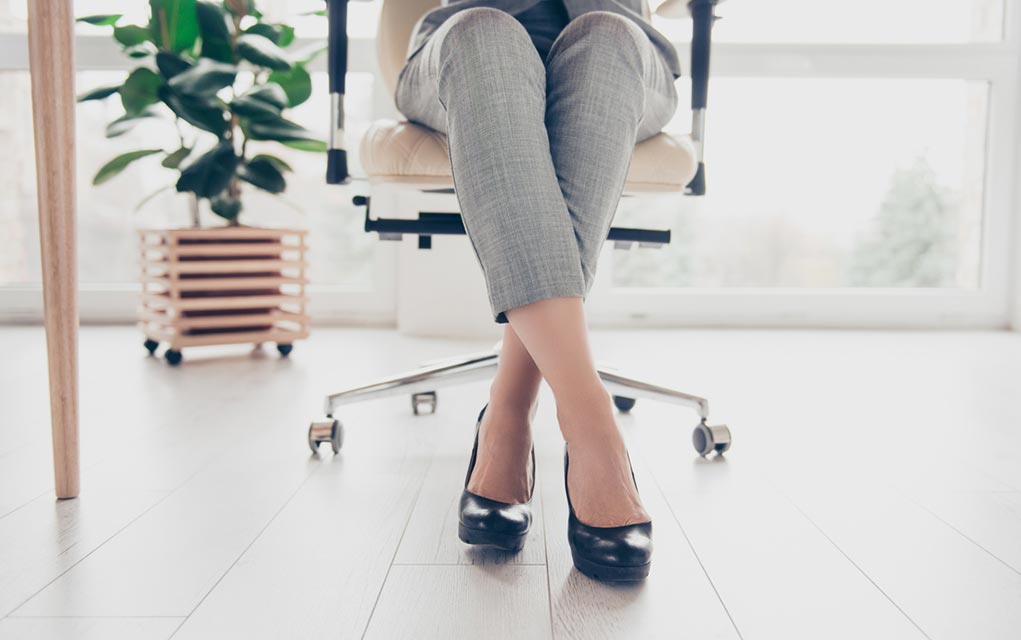
DANGER! The Risky Thing We All Do (And What You Can Do About It)
(AscendHealthy)- How many hours a day do you spend sitting? Chances are, you’re doing it enough to affect your health. Whether you’re putting your cardiovascular system at risk or sowing the seeds for chronic pain, these quick fixes can help you combat the dangers that come with prolonged sitting.
Your Cardiovascular Health
Sitting for prolonged periods can wreak havoc on your cardiovascular system. You may not always have a choice in how many hours a day you’re stuck at a workstation or desk, but you don’t have to let that affect your health. Studies are mixed over how much exercise might offset the effects, but most suggest the most effective remedy is to break up all that time you’re spending in a chair.
The Mayo Clinic recommends you only sit for 30 minutes at a time. If you’re unable to take breaks and move around, see about getting an adjustable desk that allows you to alternate between sitting and standing. Just don’t make the mistake of thinking standing for prolonged periods is any safer than sitting. One study showed standing all day can be even worse for your cardiovascular health. Try to get your body moving whenever you have the chance, even if all you can do is shift between feet or do a few stretches.
Your Back Health
Sitting all day is murder on your back if you’re not practicing good posture. If you’re at a desk or computer, you’re probably doing a number on your back no matter how hard you try to keep things ergonomically correct. Practice sitting upright, supporting the curve to your lumbar area, and holding your shoulders back. It may take some practice to improve your posture, but your back will thank you.
It’s also important to stretch throughout the day. Movement conditions the disks between your vertebrae, which keeps the joints in your spine lubricated and healthy. An immobile back will inevitably become sore. Help yours out by doing a few reps each day of these stretches:
- Lie on your back with both legs extended. Bring one knee up toward your chest and gently hug it as far as it will comfortably go. Repeat with the other leg. Stretch both legs outward between sets.
- Sit upright, crossing one leg over the other. Tuck your lower leg against your rear, and then gently twist your trunk in the direction of that foot. Reverse sides and repeat.
- Move to your stomach and prop your upper body against your elbows. Arch your back as far as it it will go without becoming painful, shifting the weight to your hands and straightening your elbows if you can.
- Move to your hands and knees and take a deep breath. When you exhale, arch your back and lower your head, reaching your chin to your chest. Then inhale, curving your back inward while gently arching the neck.
- Stretch forward, resting your forehead in front of your knees, reaching your hands either overhead or to your sides.
It might take some time and practice for you to loosen up all those tight muscles, so don’t give up if you find any of the stretches difficult at first. Make sure not to stretch to the point of pain or numbness. Stretches should be slightly uncomfortable, not painful. Discuss all new exercise regimens with your doctor if you have spinal stenosis, bulging disks or any other health problem exercise might worsen.
No matter how many hours you’re stuck in one spot each day, your health doesn’t need to suffer for it. Improve your health and reduce your pain by keeping your body moving throughout the day and doing stretches to condition your spine. Sitting might be terrible for you, but you have the tools to combat its effects. Give them a try for a month and see how much better you feel.
Copyright 2023, AscendHealthy.com




















